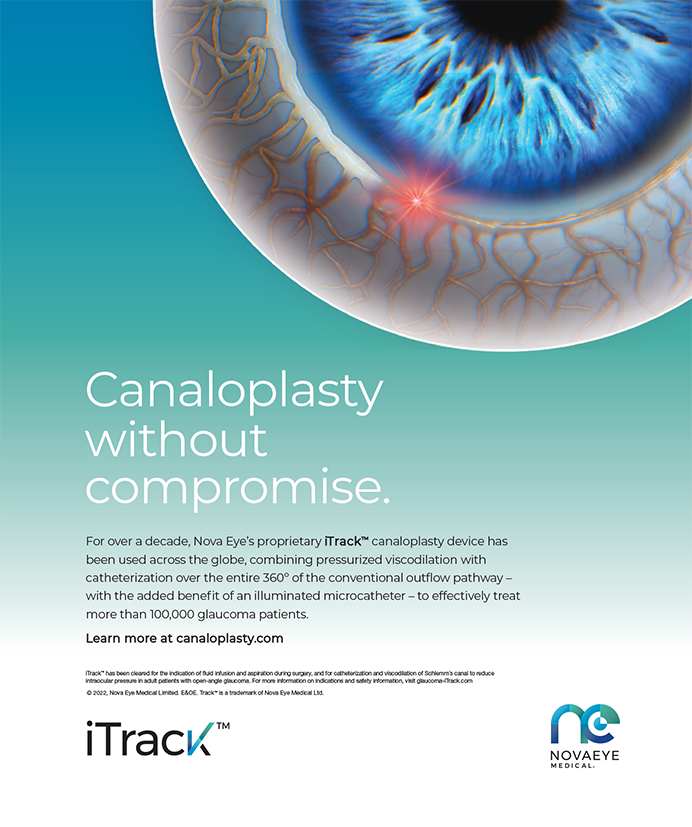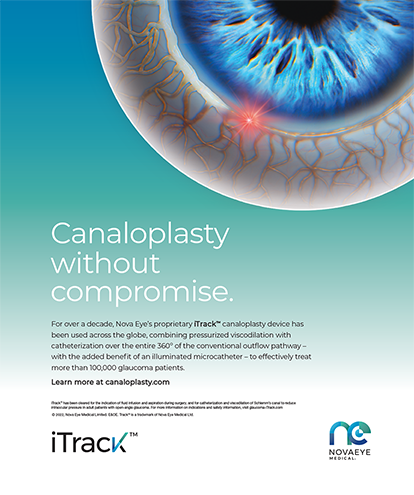When asked to share my pharmaceutical wish list, I considered that a new drug could be (1) additional labeled indications for a currently FDA-approved medication, (2) an original combination of categories of medication, (3) a novel classification of medications, or (4) an innovative delivery system.
NEW LABELING
I offer in-house dispensing at the point of patients' care through EyeScripts Dispensing to streamline the process, improve patients' compliance, and help control their costs. Before I implemented the program, up to 15% of my patients never filled their prescriptions before surgery (vs 5% now). I was essentially operating “bare” on these patients, partly because I also had no samples to provide due to their elimination by pharmaceutical companies to avoid the off-label promotion of products.
I believe that new indications would improve patients' adherence to prescribed medical therapy. Labeling that better reflects drugs' use would help to justify their cost to patients and reduce surgeons' malpractice liability. Today, for example, most cataract surgeons prescribe postoperative medication off label for prophylaxis against endophthalmitis and cystoid macular edema as well as for the on-label indication of reducing pain.
MORE FIXED COMBINATIONS
Another way to increase convenience for patients and thus, I believe, their compliance would be the development of more fixed combinations of medications such as a steroid and nonsteroidal antiinflammatory drug (NSAID) in a single eye drop. Both classes already have similar FDA-approved indications (treatment of pain and inflammation after ocular surgery). A major challenge in ocular therapeutics is obtaining an optimal concentration of drug at the site of action.1 Many new formulations of NSAIDs as advanced gels and emulsions increase contact time on the ocular surface and thus augment potency. I doubt it would be hard to develop a fixed combination of the classes, especially if the FDA permits the blending of two similar already approved indications.
FRESH CLASSIFICATION
My wish list also includes a potent intracameral antibiotic that has a minimum inhibitory concentration compatible with data from the Antibiotic Resistance Monitoring in Ocular Microorganisms (ARMOR) study and/or a potent intracameral fixed combination of a steroid and NSAID without the typical risks of the individual agents such as elevated IOP and corneal melting. At the end of a procedure, many surgeons already instill a 0.05- to 0.1-mL bolus of sterile, isotonic, unpreserved moxifloxacin 0.5% with nearly a physiologic pH (6.8) from a commercially available bottle.2,3 Even so, this off-label use of the drug does not match the resistance and potency data desired in the 2009 ARMOR surveillance study.4 Unfortunately, the newer topical formulations to enhance potency and reduce resistance are contraindicated for any intraocular usage and even have some inherent risks when used topically (eg, under a LASIK flap or under a bandage contact lens after PRK), as stated in the recent ASCRS alert March 2013.5
I want topical “super” steroids that do not carry the side effects of elevated IOP or “superinfection” (ie, secondary imposed fungal or atypical parasitic infection from immunosuppression from a steroid). I would also like topical super NSAIDs that maintain a high level of potency with once-daily dosing but do not carry a risk of corneal toxicity.
ORIGINAL DELIVERY SYSTEMS
Punctal plugs, contact lenses, inserts, nanotechnology— many such devices are in the design phase, the subject of FDA study, or approved for use. Eye drops account for approximately 90% of all ophthalmic formulations, but their effect can be highly variable owing to nasolacrimal clearance, tear film dilution, spillage, and inaccurate instillation. Moreover, pH, ionization, and halogenation can also influence drugs' penetration and absorption. Only approximately 5% of the administered active dose is absorbed or becomes available at the site of physiological activity.6 The reduced corneal absorption can be due to spillage, nasolacrimal drainage/clearance, dilution from tearing and blinking, and systemic absorption through the conjunctival and scleral surfaces. Advanced vehicles have begun to address this problem, but they have also created new potential risks, as mentioned in the recent ASCRS alert.5
Ophthalmic inserts have been available for some time, but their popularity is low, primarily because they rely on patients' compliance. Punctal plugs are a better alternative, but their duration of action is limited, particularly if they are dissolvable. Moreover, therapy ends abruptly if the plugs are suddenly dislodged. Contact lens-driven therapy will be most useful in a postsurgical setting.
My interest lies in nanotechnology. Biodegradable polymers could be combined with drugs in such a way that the material releases the agent into the eye in a predesigned manner. Researchers in the United Kingdom are making progress with this approach to ophthalmic drug delivery.7 I would very much like to be able to modify the release of a drug as a therapeutic approach after cataract/refractive surgery or as long-term therapy for dry eye disease or glaucoma.
Mitchell A. Jackson, MD, is the founder and director of Jacksoneye in Lake Villa, Illinois. Dr. Jackson is on the speakers' bureaus of Abbott Medical Optics Inc.; Alcon Laboratories, Inc.; and Allergan, Inc. He is a consultant to Bausch + Lomb and is cofounder of EyeScripts Dispensing. Dr. Jackson may be reached at (847) 356-0700; mjlaserdoc@msn.com.
- Kaur IP, Kanwar M. Ocular preparations: the formulation approach. Drug Dev Ind Pharm. 2002;28(5):473-493.
- Espiritu CR, Caparas VL, Bolinao JG. Safety of prophylactic intracameral moxifloxacin 0.5% ophthalmic solution in cataract surgery patients. J Cataract Refract Surg. 2007;33(1):63-68.
- Lane SS, Osher RH, Masket S, Belanie S. Evaluation of the safety of prophylactic intracameral moxifloxacin in cataract surgery. J Cataract Refract Surg. 2008;34:1451-1459.
- Haas W, Pillar CM, Torres M, et al. Monitoring antibiotic resistance in ocular microorganisms: results from the Antibiotic Resistance Monitoring in Ocular micRoorganisms (ARMOR) 2009 surveillance study. Am J Ophthalmol. 2011;152(4):567-574.
- ASCRS Cornea and Refractive Surgery Committees. Attention: Medication Alert for LASIK and PRK. ASCRS website. http://www.ascrs.org/Press-Releases/attention-medication-alert-lasik-and-prk. Published February 14, 2013. Accessed June 8, 2013.
- Gaudana R, Ananthula HK, Parenky A, Mitra AK. Ocular drug delivery. AAPS J. 2010;12(3):348-360.
- Nanowerk. Nanoparticles make better eye drops. http://www.nanowerk.com/spotlight/spotid=822.php. Posted September 13, 2006. Accessed June 7, 2013.


